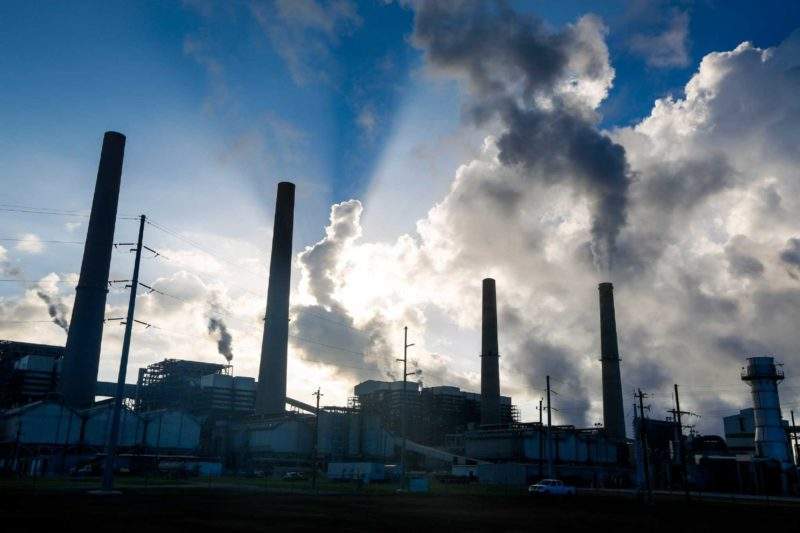
The high cost of carbon capture and storage (CCS) has thus far kept the technology from entering mainstream use, though it is held as one of the few means of keeping fossil fuels in the global energy mix without inciting further environmental damage.
The promise of such a method has meant that projects looking to lower costs have consistently received a steady trickle of money and interest, gradually cementing the possibility of CCS being a major contributor to nations’ future energy infrastructure.

Access deeper industry intelligence
Experience unmatched clarity with a single platform that combines unique data, AI, and human expertise.
However, with recent statistics putting global carbon emissions at almost 40 billion metric tonnes per year, finding a means of curbing emissions – and finding an affordable way to capture carbon – grows ever more pressing.
What is the cost of carbon capture?
CCS holds great promise in that it can capture up to 90% of the carbon emissions produced from burning fossil fuels. If deployed with renewable biomass, the method is also one of the few carbon abatement technologies that can be carbon negative, working to extract carbon dioxide from the air.
While costs of different CCS projects vary depending on the source of the carbon captured, the distance to the storage site, and the nature of the storage site itself, capture is typically the most expensive part of the CCS process. As such, much of the current CCS development is concerned with lowering the cost of this element.
The Carbon Capture and Storage Association (CCSA) estimated that the earlier CCS projects in the power sector would cost between €60–€90 per tonne of carbon dioxide abated, the equivalent of around $69-$103 per tonne.

US Tariffs are shifting - will you react or anticipate?
Don’t let policy changes catch you off guard. Stay proactive with real-time data and expert analysis.
By GlobalDataThe association also predicted that these costs will decline to €35–€50 ($40-$57) in the early 2020s, thanks to technological advancements.
In practice however, costs have typically been higher than these figures, with Science magazine saying the technology costs around $600 per tonne of CO2, with the potential to drop to $100 per tonne only realised in recent years.
Carbon capture cost: Can it go down?
Some industry members have expressed the hope that CCS will follow a similar cost trajectory as another golden child of the renewable industry: lithium batteries. Over the past ten years or so, lithium ion batteries have fallen in cost by around 80%, with a Bloomberg New Energy Finance survey finding prices have dropped from around $1,000 in 2010 to current figures of around $200 per kWh. Prices are expected to continue falling to below $100/kWh by 2025.
According to Greentech Media, if the price of carbon capture falls 12% per year, in line with the fall recorded by lithium ion batteries, this would put air carbon capture at less than $20 per metric ton by the 2040s, equivalent to an increase in gasoline prices of around 10% at current prices, or 25 cents a gallon.
A significant breakthrough in terms of price came in July this year, when researchers from Harvard University announced their discovery of a new method to capture carbon dioxide for $94 per tonne. The research was carried out in collaboration with Carbon Engineering.
Lead research author David Keith said: “What we’ve done is build a [direct-air capture] process that is – as much as possible – built on existing processes and technologies that are widespread in the world. That’s why we think we have a reasonable possibility of scaling up.”
The new method pulls air through ‘contactors’ and exposes it to an alkaline liquid. The liquid is brought into the factory where it undergoes a series of chemical reactions to separate the base from the acid, before being frozen into pellets, slowly heated, and then converted into a slurry.
Finally, the carbon dioxide is combined with hydrogen and converted into liquid fuels, including gasoline, diesel, and jet fuel.
Keith told the Atlantic: “The main, near-term market is making carbon-neutral hydrocarbon fuels… We see this as a technology for decarbonising transportation.”
Investment into lowering the cost of carbon capture is continuing to gain momentum, with the announcement from Harvard spurring researchers on with the promise of even lower costs.
Most recently, the US Department of Energy (DOE) has announced it is pledging up to $30m in federal funding for cost-shared research and development into lowering the cost of carbon capture from coal-fired power plants.
Other projects in the pipeline
According to the World Coal Association, there are currently 21 large-scale integrated CCS projects currently in operation or under construction.
On Monday, carbon capture firm Climeworks added another plant to this list, opening its third direct air capture (DAC) plant in Troia, Italy.
The company launched its first two last plants year, one in Zurich, Switzerland and the other in Hellisheidi, Iceland. The former is capable of capturing 900 metric tonnes annually, while the latter captures 50 metric tonnes per year. The latest plant will capture 150 tonnes of carbon dioxide each year, which will be converted into methane and used to power trucks running on ‘green gas’.
Despite Climeworks’ leading role in the industry, its projects are still on the expensive side, with the cost of capturing one metric tonne of carbon dioxide between $600 and $800. However, a spokesperson for the company told Quartz that the price is expected to come down following the installation of more units.







